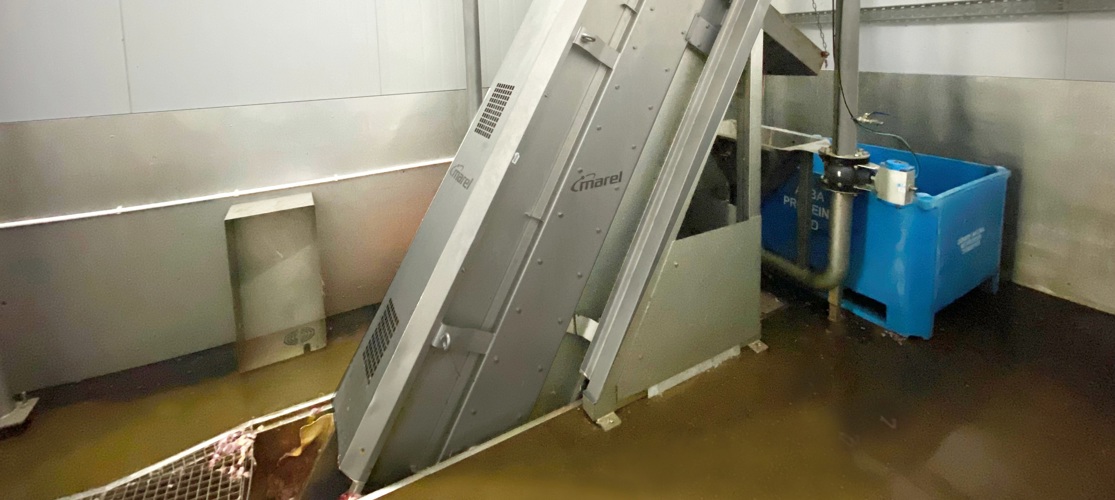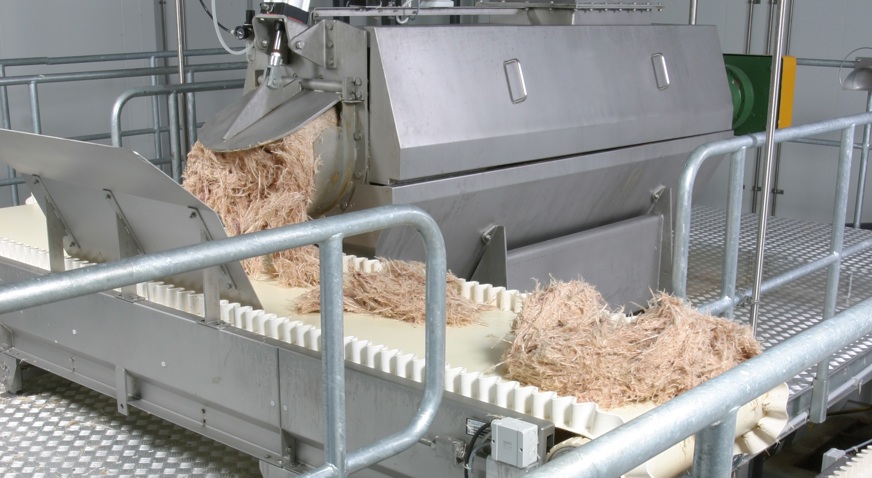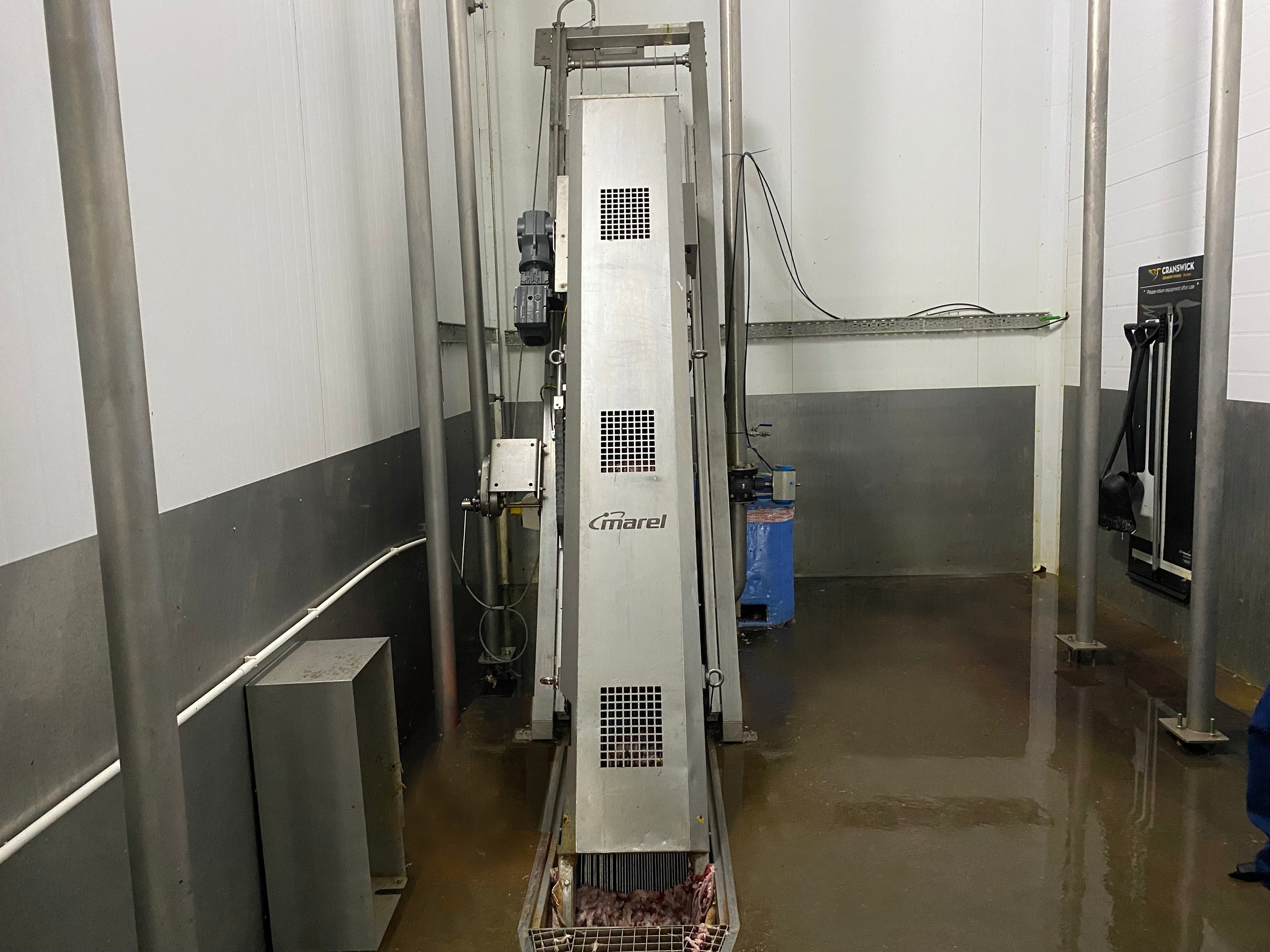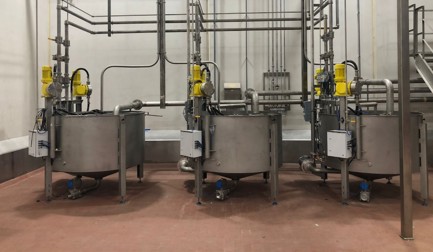The new soft offal screen needs only a single connection to the vacuum transport system to convey away solids.
Marel has always opted for fluming feathers in water, pressing them dry and then returning water to the feather flume for re-use. This method has proven itself over many decades as environmentally friendly and sustainable, because process wastewater is re-used for transporting the feathers to the pump.
Marel has made three improvements to the system, which make it even more robust, efficient and reliable. The feather pit has been deepened by 300mm to promote the better mixing of feathers and water, ensuring a continuous flow of the correct mix to the feather pump.
Dividing feathers
A second stand-by recirculation pump has been added for higher volume plants. Should there be a problem with the original pump, the stand-by pump can be brought into action by flicking a switch. Any downtime is therefore minimal.
In those processing plants where two dry feather containers can be accommodated at the same time, dividing feathers equally between the two containers could sometimes be problematical, necessitating the intervention of an operator. Improvements in the design of the system will ensure that filling the containers is done more evenly to make the best possible use of available space.



